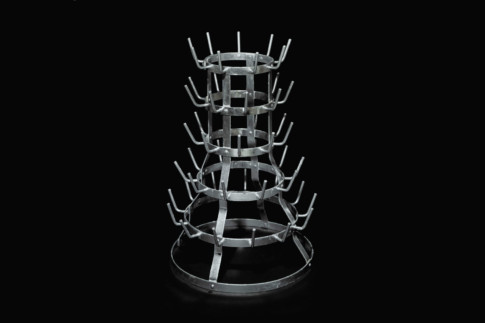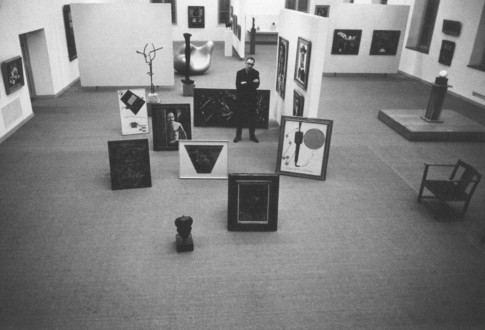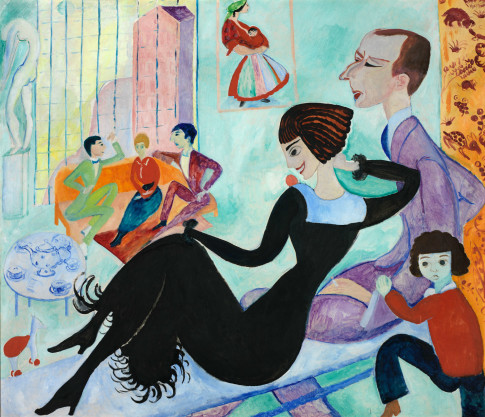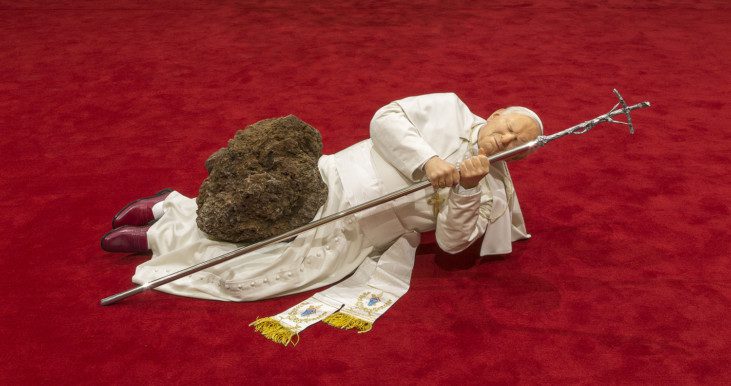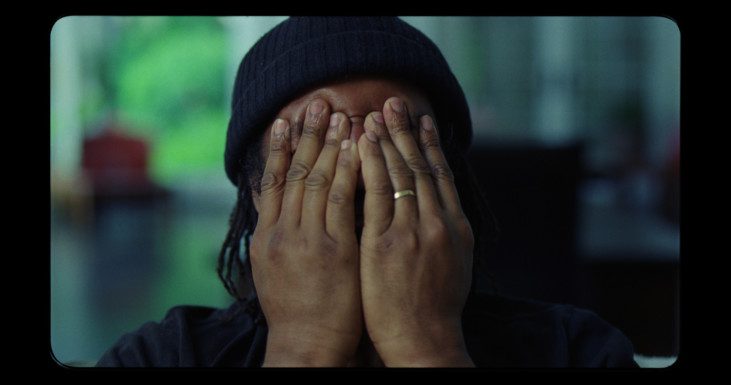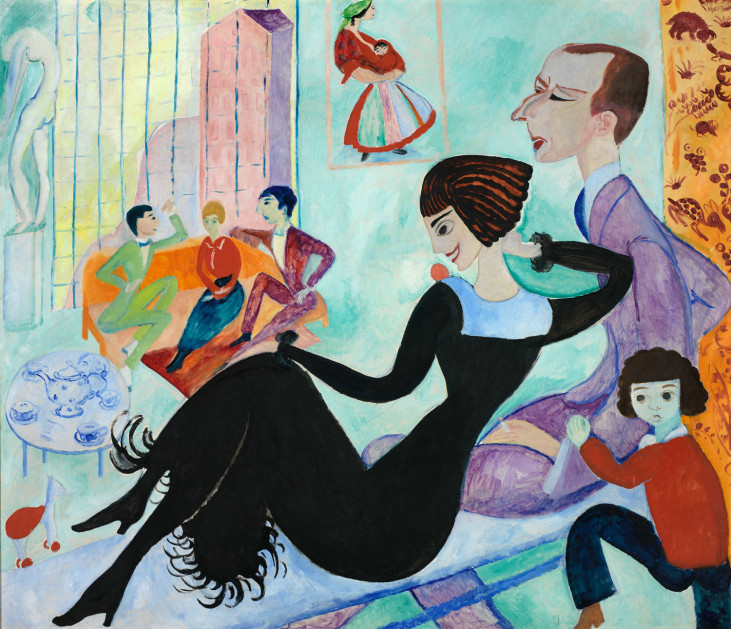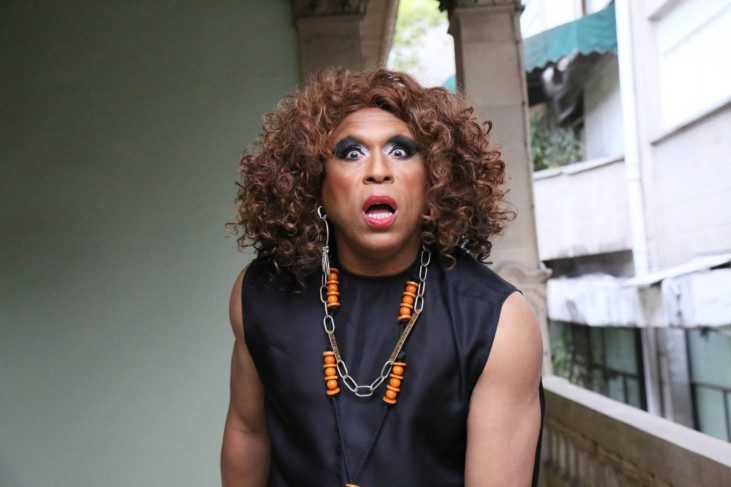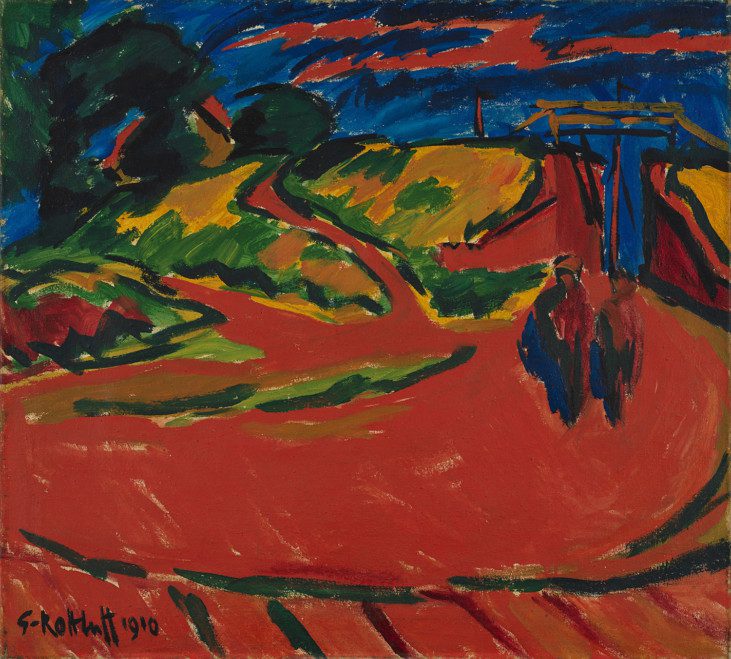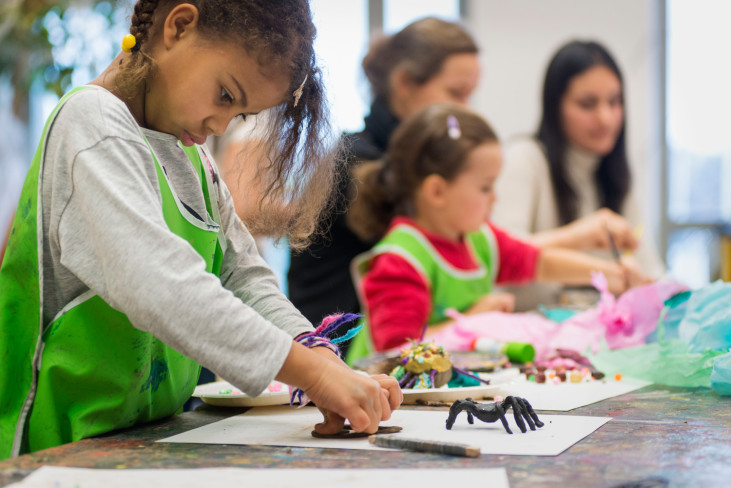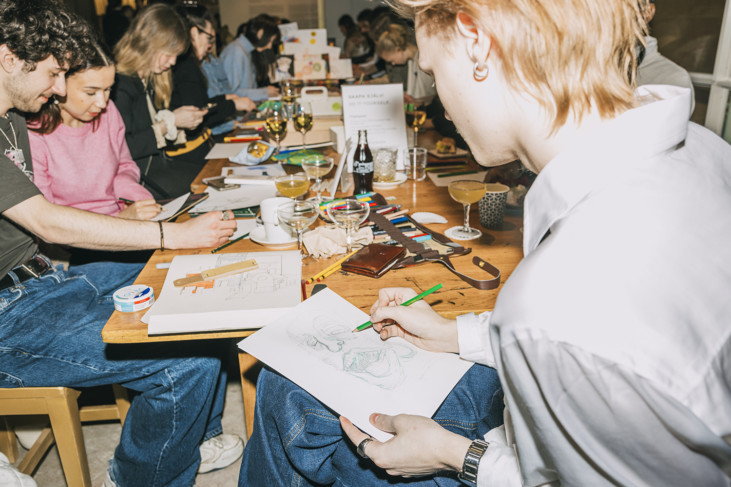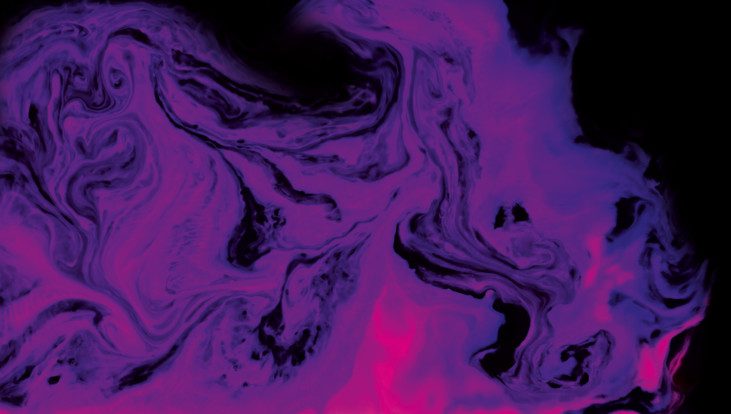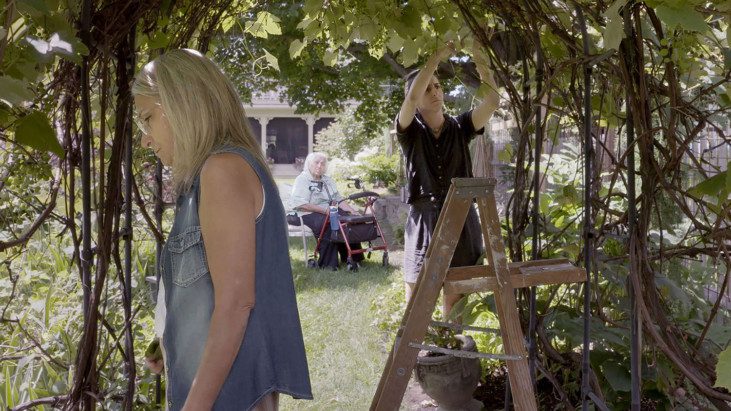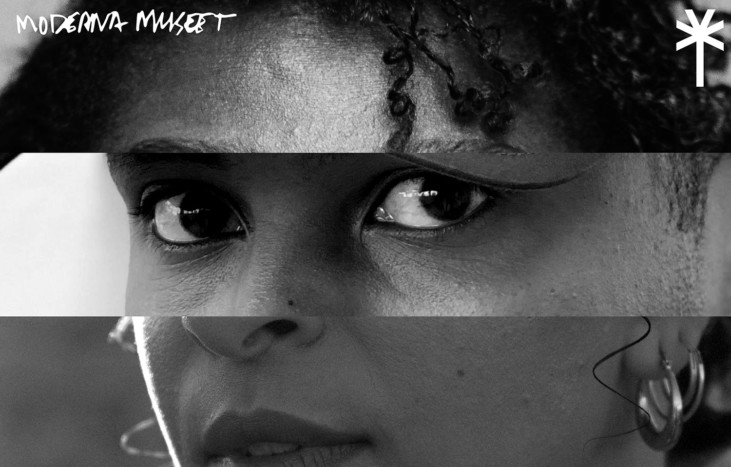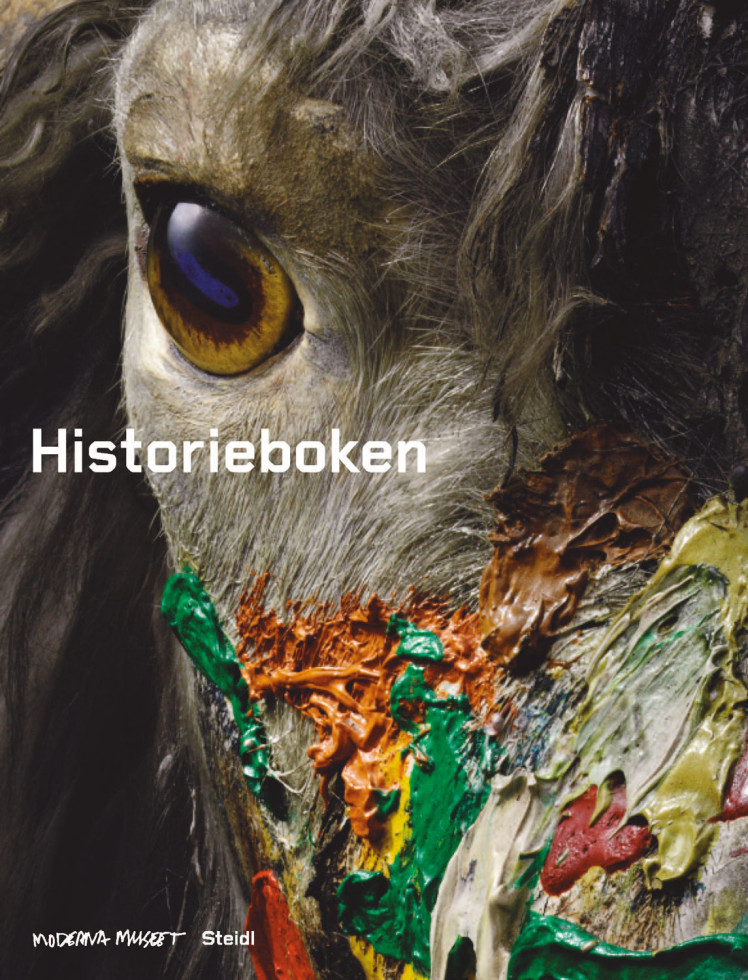
2008
The Moderna Museet 1958–2008
In October 2008, The History Book. On Moderna Museet 1958-2008 was published, as a result of a major research project. The book presents 12 new texts on a number of subjects that have been central to the Museum’s activities. It is also amply illustrated and contains information about exhibitions and events, along with a bibliography.
The authors of The History Book are:
Eva Eriksson, Annika Gunnarsson, Martin Gustavsson, Maria Görts, Anette Göthlund, Hans Hayden, Marianne Hultman, Karin Malmquist, Magnus af Petersens, Martin Sundberg, Anna Tellgren, Jeff Werner. The artists Marysia Lewandowska and Neil Cummings were invited to contribute an artistic intervention to the book.
Editor: Anna Tellgren Moderna Museet
Design: BrittonBritton
Co-produced by Moderna Museet and Steidl Verlag.
The History Book Research Project
The History Book was the result of four years of research initiated by the Museum itself, a mediation on the Museum’s role on the Swedish and international art scene. A fundamental precept of the project was to give both internal and external perspectives. Therefore, the project included a reference group consisting of the Museum’s curators, and a research team of seven independent scholars. The history of museums for modern art had been examined from different viewpoints in the previous work of the invited scholars. The variety in the team members’ backgrounds contributed to the project’s work process, which was based on an established method – research seminars as forums for sharing experiences and information. When the idea of a project on the history of Moderna Museet was first broached at the Museum’s curator meetings in autumn 2004, topics were defined that could be interesting to discuss and explore in greater depth. From spring 2006, the reference and research groups began meeting regularly for work or seminars, where ideas and draft proposals were discussed and agreed on. These meetings were crucial to the final selection of topics.
The History Book thus deals with the Museum’s history from several perspectives, covered by three overall categories: the history of the collection, museum policies, and the Museum’s various fields of activity. The first category includes Annika Gunnarsson’s account of how the Nationalmuseum’s print collection was transferred to Moderna Museet in 1998. The focus is on problems relating to collection policies, decisions and discussions preceding the transfer, and the theoretical distinction between modern and contemporary art. Anna Tellgren also touches on these issues in her essay on how Fotografiska Museet became a department within Moderna Museet. Looking at the debate on the position of photography, Tellgren discusses how the contents and style of this medium have changed in recent decades. While Gunnarsson and Tellgren focus on recent history, Marianne Hultman looks at Moderna Museet’s early activities in the legendary 1960s. Hultman has studied Pontus Hultén’s relationship to the New York resident Billy Klüver. Through interviews and correspondence, she reveals how Klüver helped Hultén build his American network in connection with a few of the Museum’s most famous exhibitions.
On a more general level, Maria Görts and Martin Gustavsson examine how the collection emerged over a longer period of time, and how the museum collection provides a foundation for a political game. Görts discusses how Moderna Museet was engendered by the Nationalmuseum, and demonstrates how the collection has been influenced by donations, purchases, networks, chance and goal-oriented decisions. Gustavsson, instead, studies the Museum’s activities from a financial perspective. In Gustavsson’s essay, the government’s spending authorisation serves as a starting point for a discussion on how the Museum’s pragmatic situation has corresponded to the political and economic framework at different times.
The Museum’s activities are based on its exhibitions. Magnus af Petersens and Martin Sundberg write about the very aspect of the collection where the exhibition format has mostly been ephemeral: events for film and video art, performances and performance art. Hans Hayden’s essay deals with a few pivotal exhibitions – Movement in Art (1961), Inner and Outer Space (1965), Implosion. A Postmodern Perspective (1987) and Wounds. Between Democracy and Redemption (1998) – to examine how they have influenced and changed the perspective on art and recent art history. Martin Sundberg has focused on another aspect of the exhibition activities: the catalogues. Aesthetic, financial and art policy perspectives on Moderna Museet’s exhibition catalogues are discussed in an international and historical context. Jeff Werner’s essay focused on the international perspective, and on how Moderna Museet has been received abroad. From the outside, Moderna Museet’s activities have been interpreted in different ways in different countries, and international attention has fluctuated over the years.
Anette Göthlund and Karin Malmquist highlight the Museum’s history in the field of education. Göthlund’s essay compares the Museum’s learning methods to society’s approach to children and young adults. Tendencies and trends vary over time, and Göthlund juxtaposes Carlo Derkert’s famous pedagogy with contemporary values. Karin Malmquist’s essay describes the Museum’s educational activities decade by decade, with regard to activities aimed at an adult public.
Neil Cummings and Marysia Lewandowska contributed an artistic intervention to the History Book. Based on Ayan Lundquist, fictive director of the Museum in year 2058, they confabulate a history of the future of Moderna Museet. With a fictive foreword, a detailed chronology up to 2058, an interview with the future director and short presentations of each essay, all written from the future, they create a historic perspective on the newly-written essays about the Museum. Cummings and Lewandowska’s project is distinguished by pale-blue pages in the History Book and is interfoliated throughout the publication. A filmed interview with the would-be future director reveals an image of the Museum’s fictional future. This film was shown at the symposium held on the occasion of Moderna Museet’s 50th Anniversary and the launch of the History Book in autumn 2008.
The publication is richly illustrated and features documentation of exhibitions, events and staff, chronologies, a list of publications and a bibliography of literature on Moderna Museet.
The research project received funding from the Gertrude and Ivar Philipson Fund.
Symposium: The Past, the Present, the Future
The history of the modern art museum.
A symposium at Moderna Museet 17–18 October 2008
The symposium The Past, the Present, the Future sprang from Moderna Museet’s The History Book research project. While The History Book was devoted to the Museum’s history, the symposium sought to extend the discussion to the challenges and possibilities facing a modern museum in the early 21st century. The first day of the symposium the Museum was discussed from a Swedish perspective, and several of the speakers had personal connections to various phases in the history of Moderna Museet. Hans Hayden, professor of art history at Stockholm University, spoke about the modern museum as a forum for research. Monica Nieckels, curator for films and events at the Museum between 1972 and 1996, shared her personal recollections. The art critic Beate Sydhoff spoke on how the Museum was received by the press in 1966–1979. Margaretha Rossholm Lagerlöf, professor emeritus at the department of art history at Stockholm University also gave a personal version of her encounter with American art at the Museum in the 1960s. The first day of the symposium concluded with a screening of a film by Marysia Lewandowska and Neil Cummings, Museum Futures, which was produced for The History Book. The film consists of an interview with the fictive director of Moderna Museet in 2058, Ayan Lindqvist, and is a critical yet visionary fantasy about Moderna Museet’s activities 50 years from now.
On the second day, the outlook was widened when several international guests presented their perspectives on the modern art museum. Mary Anne Staniszewski, author of the already classic study, The Power of Display. A History of Exhibition Installations at the Museum of Modern Art (1998), related a few of Moderna Museet’s more political exhibitions in the 1970s to concerns in sectors of the art scene today. The Canadian art historian Patrik Andersson lectured on Pontus Hultén’s activities at Moderna Museet, a subject he also deals with in his doctoral thesis Euro-Pop. The Mechanical Bride Stripped Bare in Stockholm (2001). In Maria Hirvi-Ijäs’ lecture, the picture was further broadened by her discussion on the exhibition medium from a theoretical perspective. Hirvi-Ijäs is the author of a doctoral thesis in art history titled Den framställande gesten. Om konstverkets presentation i den moderna konstutställningen (The Performative Gesture. On the presentation of artworks in the modern art exhibition, 2007). The architectural critic Mimi Zeiger discussed the trend of spectacular buildings for modern art, and reflected on its political incentive and impact on the visitors’ experience of the museum. The last lecture was delivered by Kylie Message; under the heading of Museums in the Twenty-First Century, she discussed the modern museum from a post-colonial perspective. The symposium ended with a panel discussion with the participating speakers. On the topic of Will the Modern Museums be Historic Soon? Moderna Museet’s curator John-Peter Nilsson moderated a discussion that centred on the delicate task of the modern museums of simultaneously managing 20th century art history and being a forum for contemporary art. Several of the talks were edited and published in a theme issue of Konsthistorisk tidskrift/Journal of Art History (Häfte 4, 2009).
Published 9 November 2015 · Updated 24 November 2015

